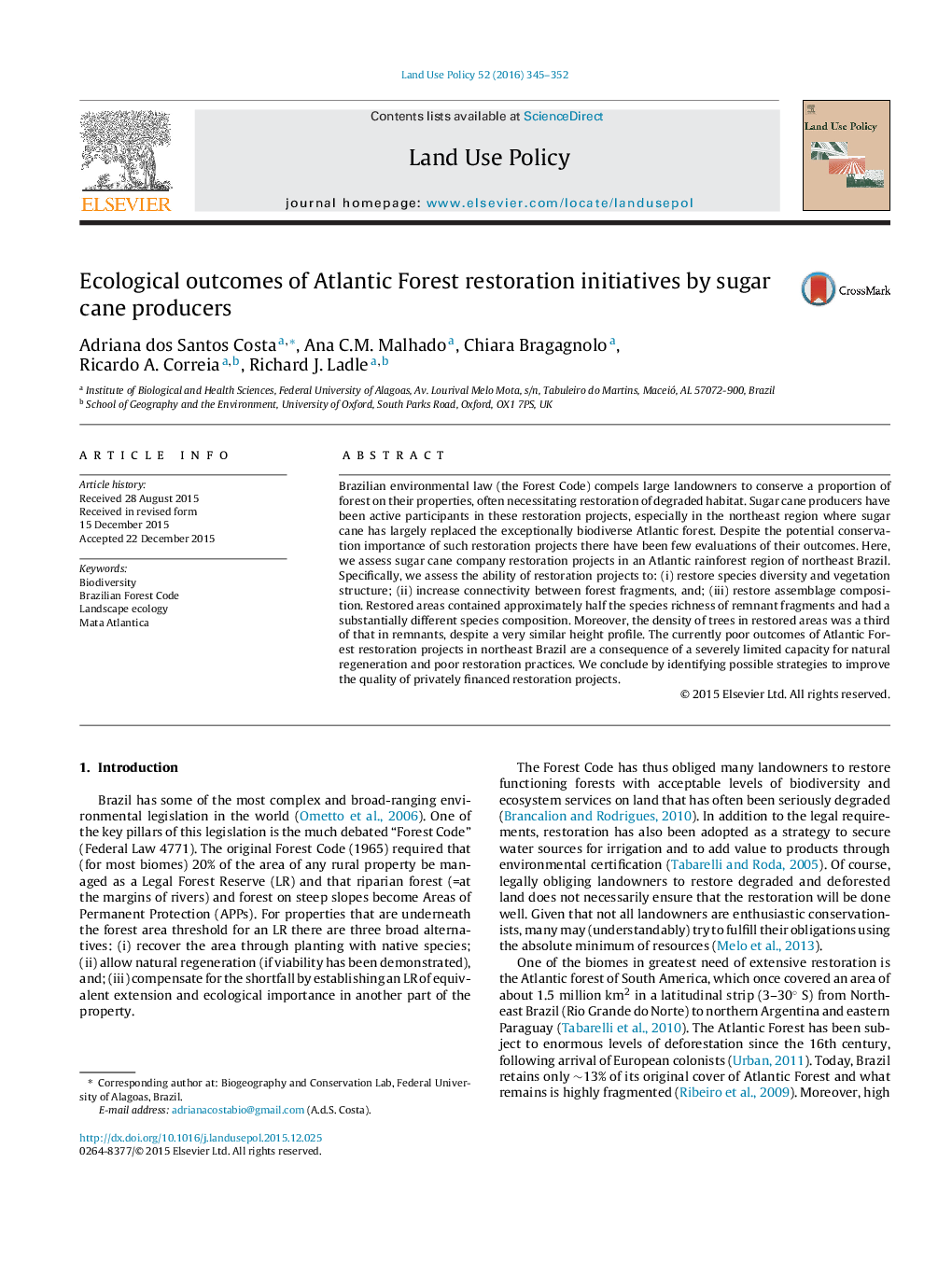| Article ID | Journal | Published Year | Pages | File Type |
|---|---|---|---|---|
| 6547487 | Land Use Policy | 2016 | 8 Pages |
Abstract
Brazilian environmental law (the Forest Code) compels large landowners to conserve a proportion of forest on their properties, often necessitating restoration of degraded habitat. Sugar cane producers have been active participants in these restoration projects, especially in the northeast region where sugar cane has largely replaced the exceptionally biodiverse Atlantic forest. Despite the potential conservation importance of such restoration projects there have been few evaluations of their outcomes. Here, we assess sugar cane company restoration projects in an Atlantic rainforest region of northeast Brazil. Specifically, we assess the ability of restoration projects to: (i) restore species diversity and vegetation structure; (ii) increase connectivity between forest fragments, and; (iii) restore assemblage composition. Restored areas contained approximately half the species richness of remnant fragments and had a substantially different species composition. Moreover, the density of trees in restored areas was a third of that in remnants, despite a very similar height profile. The currently poor outcomes of Atlantic Forest restoration projects in northeast Brazil are a consequence of a severely limited capacity for natural regeneration and poor restoration practices. We conclude by identifying possible strategies to improve the quality of privately financed restoration projects.
Related Topics
Life Sciences
Agricultural and Biological Sciences
Forestry
Authors
Adriana dos Santos Costa, Ana C.M. Malhado, Chiara Bragagnolo, Ricardo A. Correia, Richard J. Ladle,
